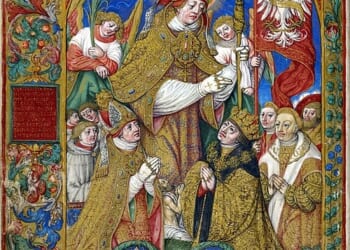Born Jorge Mario Bergoglio on December 17, 1936, in Buenos Aires, Argentina, Pope Francis was the 266th pope of the Roman Catholic Church and the first from the Americas. His papacy, from March 13, 2013, to April 21, 2025, brought change to the Vatican and the Church at large, resulting in his becoming one of the most complex pontificates of the last century.
Early Life and Education
Jorge Mario Bergoglio was born into a family of Italian immigrants. His father, Mario José Bergoglio, worked as a railway worker, while his mother, Regina Maria Sívori, was a housewife. The family was of modest means, and they raised Jorge Mario with a strong sense of family values, work ethic, and devotion to the Catholic Faith. From a young age, Bergoglio was drawn to religious life, and he entered the Jesuits in 1958 at the age of 21.
The Jesuit order is known for its emphasis on intellectual rigor and missionary work. More recently, one can also see its commitment to social justice. Bergoglio’s education as a Jesuit led him to study philosophy and theology in Argentina and later in Spain. He also earned a licentiate in philosophy from the Colegio Máximo de San José in Buenos Aires. His formation played a significant role in shaping his character and the principles which would become central to his papacy: commitment to service, the poor, and social justice.
His Priesthood and Rise to Archbishop
Before becoming a bishop, Bergoglio served in a variety of roles in the Jesuit Order, including teaching, formation, and leading the Jesuit province in Argentina. His pastoral approach was deeply informed by the Jesuit charism, which emphasizes spiritual exercises, personal reflection, and a commitment to the marginalized.
Bergoglio was appointed as Auxiliary Bishop of Buenos Aires in 1992, and he became the Archbishop of Buenos Aires in 1998, thereafter being nominated a Cardinal in the Consistory of February 21, 2001. During his time as Archbishop, he made it a point to focus on pastoral care and simplicity. He chose to live in an apartment rather than the archbishop’s palace, and he preferred to travel by public transportation rather than by private car whenever possible.
Bergoglio’s pastoral approach was not just about living simply, but also about engaging deeply with the poor and marginalized, as he would repeatedly stress in his teachings. He spent significant time in the poorer areas of Buenos Aires, where he focused on social justice issues, education, and care for the homeless. His work with the poor became one of his most notable attributes, as he sought to bring attention to the plight of the underprivileged and work toward tangible solutions to poverty, though his proposed solutions often became the source of debate.
Election as Pope
On March 13, 2013, after the sudden resignation of Pope Benedict XVI, the Cardinals elected Jorge Mario Bergoglio as the 266th pope, and he chose the name Francis, the first to do so in papal history, calling attention to St. Francis of Assisi to symbolize his commitment to humility, simplicity, and care for the poor. His election was a historic one: not only was he the first pope from the Americas, but he was also the first Jesuit pope in the history of the Church.
A legacy to take from Pope Francis
Speaking to most mainstream media, one would gather the following strengths of Pope Francis: Humility and Simplicity, Commitment to Social Justice, focus on Mercy and Forgiveness, Dialogue and Ecumenism, and Reform of the Vatican. I would like to focus my attention on the Simplicity of Faith.
One day, I remember Pope Francis saying that the Faith is like that of his grandmother. When one thinks about it, this is the crux of the matter. With the complexity surrounding our understanding of the Faith, one cannot forget what St. Thomas writes at the beginning of his Treatise on Faith in the Summa Theologiae:
As is clear from its language, the Creed expresses the things of the faith as they are the term of the believer’s act. Such an act does not have a proposition as its term, but a reality, since just as with scientific knowledge, so also with faith, the only reason for formulating a proposition is that we may have knowledge about the real.
Actus autem credentis non terminatur ad enuntiabile, sed ad rem.
The act of Faith is about reality, not about words alone.
I think that this is what Pope Francis tried to convey to all of us. He stripped everything to try to get to the reality of Faith. He was very devoted to popular devotions for this reason. One can imagine the Holy Family with Our Lady peeling the potatoes, Our Lord playing at her side, and St. Joseph fixing a piece of furniture. God acts precisely in the ordinary events of life, and this was what Pope Francis tried to teach.
While the Papal Office requires one to follow a certain protocol, Pope Francis’ break with traditions linked to it can be viewed as an attempt to simplify everything, even at the cost of changing the very Office or perception thereof.
Whether he intended it or not, Pope Francis brought many of us to think about the basics of the Faith. His papacy, with all its novelty, was ironically not so much about the aggiornamento but about returning to the basics of the Faith, the ressourcement, considering the two pastoral objectives of the Second Vatican Council.
Conclusion
Personally, I saw many changes during this Pontificate that challenged me greatly, and my Faith was put to the test. I had to reflect on the nature of the Papacy and on the nature of the Church. In his own unique way, Pope Francis challenged us more academic types by challenging so many of the “trappings” of the Faith, forcing us to understand the value of the Faith and the trappings as well. After all, it is Martin Mosebach who writes in The Heresy of Formlessness that the more that we veil something the more we reveal it, and the more that we unveil it the more we paradoxically hide it.
Unfortunately, many people remain confused by what Pope Francis was trying to teach in simplifying the “trappings” of the Papacy, and the Church finds herself in a difficult time. From here, some would say that the way forward requires more attention to the liturgy, others that that we need more catechesis, and others still that we need to listen to the world. I believe that we need to have all three approaches. Attention to the liturgy, to catechesis, and to culture is key to the life of the Church. Religious expression, after all, nourishes culture, which nourishes the arts (in the broad sense of the works of man) and the philosophy which explains it, as Christopher Dawson would remind us.
The Church is precisely the institution that is needed in a world very divided because it is Christ who mediates not only between the Divine and the human but between humans too, and the Church is His Mystical Body, the Temple of the Holy Spirit, and the People of God, as Lumen Gentium brilliantly explains in the Second Vatican Council. We cannot forget that Revelation is fundamental to counter the positivism and naturalism of our contemporary world, and for us Catholics Revelation is both Scripture and Tradition, a Tradition lived out in the Church as Mystical Body, Temple of the Holy Spirit, and People of God. This order is key to show that the Church is not a democracy but is guided by the Holy Spirit acting in the believers who seek the will of the Father, offering themselves to the Father, through the Son, in the Holy Spirit whenever they pray at the liturgy. This cannot be forgotten, and I do not think that Pope Francis was trying to forget this amidst some of his paradoxical words and acts. It is with such incongruencies that one seeks to understand the value of this Papacy that one understands that we must look at this within the bigger picture of Divine Providence, sub species aeternitatis. Only time will tell what his legacy really is.
Editor’s Note: Please join those of us at Catholic Exchange in praying for the soul of our departed Pope Francis:
Eternal rest grant unto Pope Francis, O Lord, and let perpetual light shine upon him. May his soul and the souls of all the faithful departed, through the mercy of God, rest in peace. Amen.
Photo from Wikimedia Commons

















